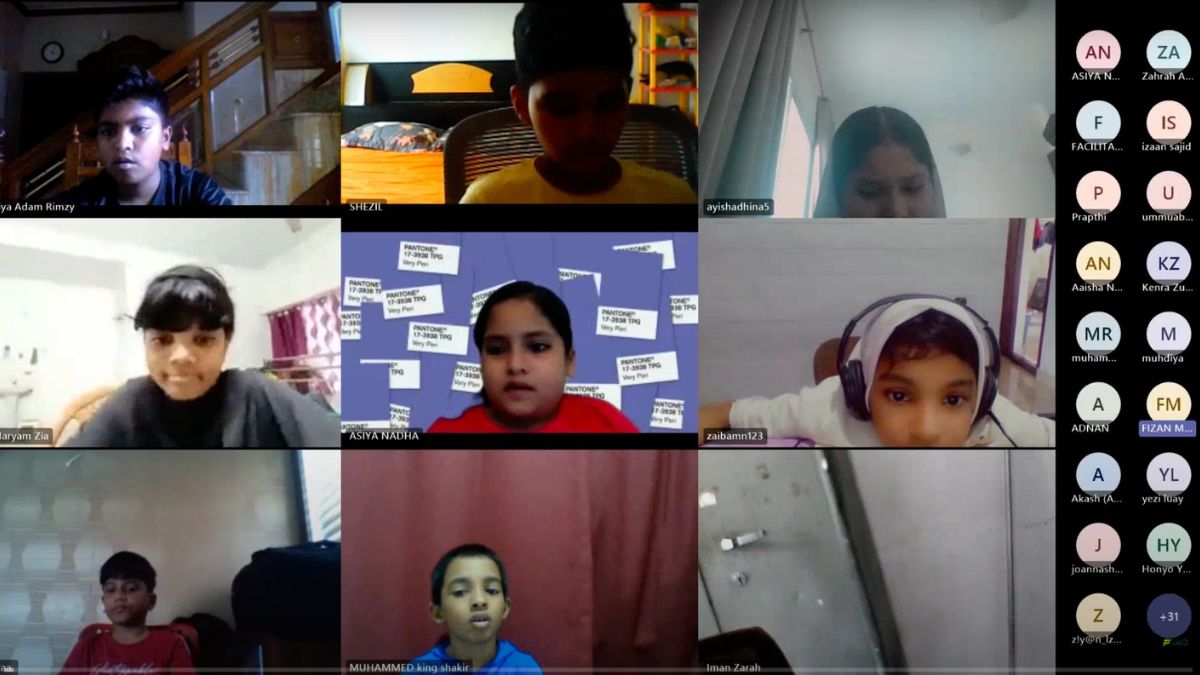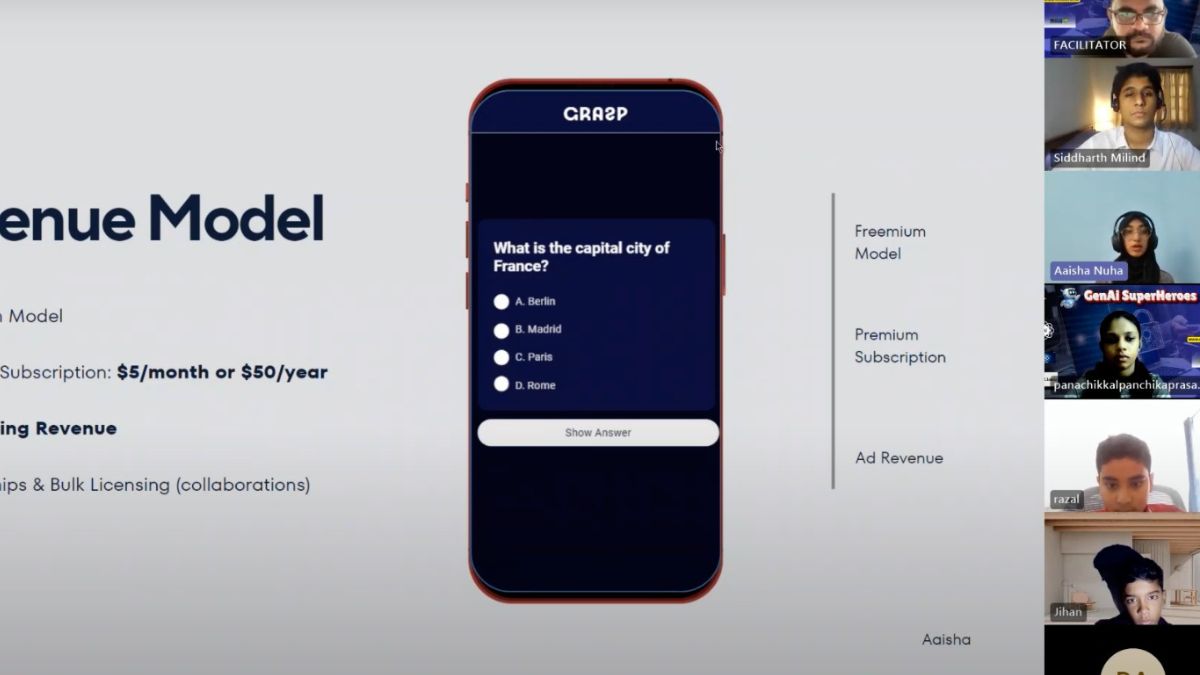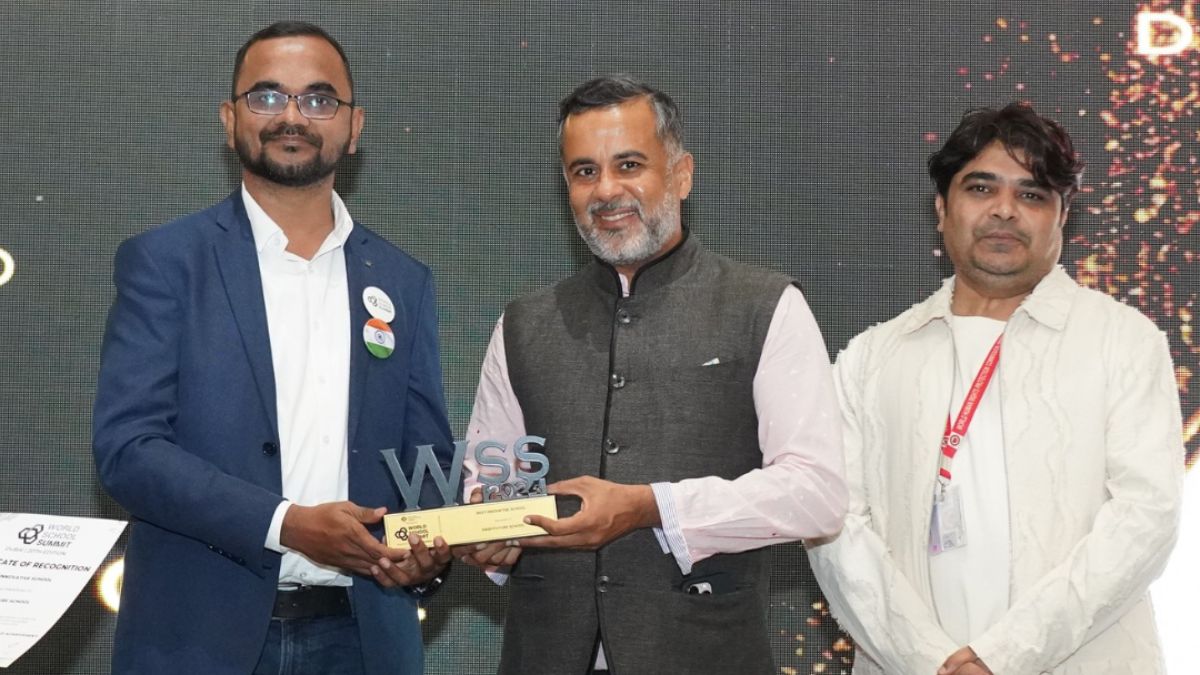In a rapidly evolving world, education has struggled to keep pace. It tends to clings to what is most familiar – traditional rote learning and standardised testing. However, Hash Future School founded by Shihabudheen P.K. and his wife Rebina Aboo, aims to reshape the educational landscape by breaking these age-old barriers.
Hash Future was recently awarded the Best Innovative School Award at the 20th edition of the World School Summit in Dubai, from among contestants belonging to 23 other countries. It was recognised for its “trailblazing AI-first approach to education”.
The beginnings of Hash Future School
Faced with a conventional schooling system that did not suit their seven-year-old son, Shihabudheen and Rebina surfed globally to find an educational model that emphasised on interactive and practical learning. “When our son was in Grade 2, we noticed that he was getting tensed about the learning process and assignments he had to complete for school. To relieve him from the tension, we started exploring other options and eventually pulled him out of school, along with our daughter who was in kindergarten at the time,” said Shihabudheen.
“We initially thought that homeschooling was about teaching CBSE or State syllabus at home, but that was not the case. So, when we started exploring, we came across a lot of different curriculums around the globe.”
The couple found out about a school in the United States called Ad Astra Agile Learning Center for Homeschoolers, which was initiated by Elon Musk. “We started following the community and understood that education should be made more practical than simply theoretical.”
This inspired Shihabudheen to teach coding to his son, who, by the age of eight, was creating his own codes. He eventually went on to start his own coding company by the age of ten called 'ABC Coders'.
On more research into various curriculums, and using resources from MIT, Stanford and Harvard, Shihabudheen and Rebina started a school where, according to them, “children can get better knowledge about real-world situations compared to regular schools”.
Societal cynicism did not deter Shihabudheen and Rebina, and they eventually launched a community that would grow into Hash Future School, with a mission to build “global citizens” with a community-focused curriculum aligned with the United Nations’ global goals.
It was first developed as a lab school where a unique, gamified curriculum was tested and tailored to fit the needs to each individual pupil. When COVID-19 hit, they switched to an online model and added innovative subjects like financial literacy, social media literacy, detection of fake news, AI-based language learning, and space science to the list. “In the U.S., they have different methods for conveying financial learning to their students, which Hash Future started to implement.”
 Students at Hash Future School
Students at Hash Future School
Moving away from rote learning, Hash Future emphasised scenario-based, case-study learning so that students can develop problem-solving skills and resolve practical issues in the real world. Artificial intelligence plays a key role in creating personalised learning paths for each student. With teachers, or "facilitators" guiding students, the approach encourages research and self-learning from grade one, focusing on nurturing students’ natural interests. “We have set an objective that by the age of 10, our students will be capable of learning on their own.”
The school’s curriculum aims to instil confidence in students, allowing them to pursue financial independence by 15 and determine their educational paths by 17. Currently, Hash Future has around 130 students from India and GCC, with a further transformation programme, called Super Kids, for children attending regular schools.
What do the students say about Hash Future School?
Jannah, Grade 12, found out about Hash Future School through a seminar and was drawn to the different approach when she attended their demo session. She was following the Kerala syllabus till 10th grade, after which she switched to Hash Future. Unlike conventional schools, Jannah studies subjects like general science, mathematics, business, and technology through a gamified model, customised to her needs and pace.
“Travelling was the biggest difference when shifting from a normal school to an online medium. The learning aspect of it is still the same. But this time when I learn, I actually feel like I'm learning something so I can use it later in my life,” Jannah said.
She added that the new learning method aligns better with her goals. Aiming to be a forensic scientist, she enjoys the online labs and experiments, and is currently preparing for her National Institute for Open Schooling (NIOS) exams. She said that the skills and adaptability that Hash Future School has offered her are more practical and beneficial than what she has experienced before.
 Students create a revenue model for an app
Students create a revenue model for an app
Siddharth, an 11th-grader from Bangalore, joined Hash Future School in the 9th grade after finding the traditional ICSE curriculum increasingly challenging. He shifted to Hash Future, where he could pursue commerce and explore real-world applications. Siddharth feels he has a huge advantage over students in traditional schools, thanks to the AI tools available at Hash Future. This has enabled him to develop innovative projects, including a prototype of Apple’s Vision Pro and a model car inspired by Audi, an experience he believes would be rare in conventional schools. “I have never seen any school, till date, doing these sorts of projects. We have come up with a prototype model, and created a UI (user interface), revenue model, marketing strategies, and an entire pitch. If I was in a regular school, I would have never ever had these opportunities,” Siddharth explained.
Financial literacy is also emphasised—students contribute 25 per cent of their fees. "He (Shihabudheen) encouraged it a lot," Siddharth said. He has earned by writing profiles on notable figures. With an interest in finance, Siddharth values the chance to gain financial independence early. He’s currently working with classmates to launch an app on the Play Store.
Just like with any other online school, Hash Future does have its downsides. Jannah, for instance, found the transition from regular school to online school difficult, as she was a physically active person. Though she still goes for sports training, it has not been as frequent as when she was attending a regular school.
After class, Jannah spends the rest of her day preparing for her NIOS exams. It is a government-certified examination similar to CBSE. The NIOS exams are usually held in April and October. The exams can be written by students who are home-schooled or follow distance learning through online schools, similar to Hash Future. But unlike CBSE, the students get to pick and choose which subjects they want to study and when they want to appear for its exam.
Siddharth empasised that not being able to see his friends often has been challenging and said that his social life took a hit when he changed schools. He said that going to a regular school and making friends is in itself an experience one shouldn't miss out on.
But they said that the benefits definitely outweigh the disadvantages as they feel they are making more progress than students from regular schools.



